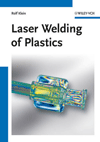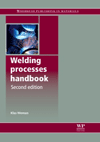Understanding the applicability, limitations and process parameters is crucial to successful ultrasonic plastic welding.
Ultrasonic welding is a popular process for joining thermoplastic parts. It is commonly used to join parts that are too complex to be molded as a single piece. High strength welds are possible with short cycle times and compact, economical equipment. It cannot, however, be used to join thermoset plastics.
Ultrasonic welding applies high frequency, low amplitude mechanical vibrations that generate cyclic deformation of the parts. This cyclic deformation generates strain at the interface of a correctly designed weld joint, and the heat generated by intermolecular friction softens the polymer so that fusion bonding can occur.
Among the factors that assemblers need to consider for successful ultrasonic plastic welding are part geometry, material attributes and the process itself.
Part Geometry. Ultrasonic welding requires specific joint designs at the weld interface to concentrate the mechanical vibrations on a small cross-sectional area and efficiently promote heating. Joint design is always a challenge and is based on many criteria, with an emphasis on the material itself, and the structural integrity required of the joint. It is usually more cost-effective to design components for ultrasonic welding with the aid of expert advice.
The ultrasonic welding process requires tight dimensional tolerances in the joint to ensure consistency. Even slight dimensional variations can hinder process reliability, reduce joint integrity and result in welds that are not aesthetically pleasing.
Equipment and tooling largely determine the size of parts that can be welded ultrasonically. For example, the ability to tune a large ultrasonic horn to provide consistent amplitude across its face puts an upper limit on part size. Welding large parts is also limited by the maximum energy that the power supply and ultrasonic stack can deliver to the horn. Conversely, joining very small, delicate components, such as implantable devices or microfluidic devices requires higher frequencies, lower welding forces and lower amplitudes.
Material Attributes. Weldability is important for ultrasonic welding applications. An ideal material candidate efficiently transfers the ultrasonic energy through the part to the weld interface where it efficiently generates heat from the ultrasonic energy. When selecting weldable materials, understanding their weldability and the impact of incorporated fillers is important.
Semicrystalline polymers are more challenging to weld than amorphous polymers. Polymer chain flow doesn’t occur until the temperature exceeds the melt temperature. The higher heat input required to melt the crystalline regions requires more weld energy, which requires higher vibration amplitude.
Amorphous polymers can be welded using a wide range of frequencies, welding forces and amplitudes because they soften over a wide temperature range. These materials also transfer ultrasonic vibrations to the weld interface very well. Amorphous polymer chains can begin to diffuse when they are heated above their glass transition temperature, which is below their melting point.
Incorporated fillers, such as glass and talc, significantly affect the ultrasonic welding process. Filler addition increases component stiffness, which increases the transmission of ultrasonic energy. Weld strengths near the bulk strength of the virgin polymer material can be achieved with small concentrations of filler material. However, high filler loading significantly reduces achievable weld strength by impeding weld flow.
Advanced thermoplastic composites incorporate nanofillers. Potential applications for thermoplastic nanocomposites continue to increase, resulting in higher demand for reliable welding methods. Ultrasonic weldability studies at EWI indicate weld strength decreases with increasing nanoclay addition. Studies confirm that nanoclays are adversely oriented in the flow direction. Nanoclays align parallel to the weld interface, resulting in weld strength reductions. Improvements are possible using nontraditional joint design.
The Process. Successful ultrasonic plastic welding requires careful planning to ensure consistent welds. Consistent part dimensions and an optimized ultrasonic horn are needed before welding parameters are selected. Process optimization can be a challenge. Large-scale design of experiments and other statistical methods should be used to identify appropriate process windows. These combine the important weld process requirements experimentally. Control limits can then be programmed into the welding power supply to identify any suspect parts that were welded outside of this process window.
Ultrasonic plastic welding can be very successful if its limitations and process requirements are understood. Once appropriate parameters have been identified and controlled, the process itself should remain consistent.
Get our new eMagazine delivered to your inbox every month.
Stay in the know on the latest assembly trends.
SUBSCRIBE TODAY!Copyright ©2024. All Rights Reserved BNP Media.
Design, CMS, Hosting & Web Development :: ePublishing


